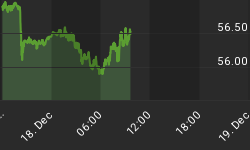**Administrative Note: Get your copy of my new book What's Wrong with Money: The Biggest Bubble of All! Here is the Amazon link. SafeHaven.com readers: be sure to check out Bruce Stratton's recent announcement, which also has a link to a special deal for SafeHaven readers.
I am often critical of central banks these days, and especially the Federal Reserve. But that doesn't mean I think the entire institution is worthless. While quite often the staff at the Fed puts out papers that use convoluted and inscrutable mathematics to "prove" something that only works because the assumptions used are garbage, there are also occasionally good bits of work that come out. While it is uneven, I find that the Atlanta Fed's "macroblog" often has good content, and occasionally has a terrific insight.
The latest macroblog post may fall into the latter category. Before I talk about the post, however, let me as usual admonish readers to remember that wages follow inflation; they do not lead or cause inflation. That reminder is very important to keep in mind, along with the realization that some policymakers do think that wages lead inflation and so don't get worried about inflation until wages rise as well.
With that said, John Robertson and Ellyn Terry at the Atlanta Fed published this great macroblog article in which they present the Atlanta Fed's Wage Growth Tracker. Here's the summary of what they say: most wage surveys have significant composition effects, since the group of people whose wages you are surveying now are very different from the group you surveyed last year. Thus, measures like Average Hourly Wages from the Employment report (which has been rising, but not alarmingly so) are very noisy and moreover might miss important trends because, say, high-wage people are retiring and being replaced by low-wage people (or industries).
But the Atlanta Fed's Wage Growth Tracker estimates the wage growth of the same worker's wage versus a year ago. That is, they avoid the composition effect.
It turns out that the Wage Growth Tracker has been rising much more steadily and at a higher rate than average hourly earnings. Here is the drop-the-mic chart:

This shows that the wage-growth tracker follows the unemployment gap (lagged 6 months) very well: with a correlation of 0.93, actually. Moreover, the wage growth tracker is (and has been) over 3%.
With this data, the Phillips curve works like a charm. Higher employment is not only related, but closely related to higher wage growth. (For the record, Phillips never said that broad inflation was related to the unemployment rate. He said wage inflation was. See my post on the topic here.) The good news is that this doesn't really say anything about future inflation, and what it means is that the worker who is actually employed right now is still keeping pace with inflation (barely) thanks to relatively strong employment dynamics.
The bad news, for Yellen and the other doves on the FOMC, is that if they were hiding behind the "tepid wage growth" argument as a reason to be suspicious that inflation will not be maintained, the Atlanta Fed just took a weed-whacker to their argument.
You can follow me @inflation_guy!
Enduring Investments is a registered investment adviser that specializes in solving inflation-related problems. Fill out the contact form at http://www.EnduringInvestments.com/contact and we will send you our latest Quarterly Inflation Outlook. And if you make sure to put your physical mailing address in the "comment" section of the contact form, we will also send you a copy of Michael Ashton's book "Maestro, My Ass!"















